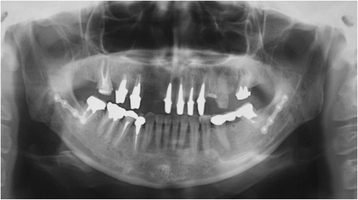Psychosomatic problems in dentistry
- PMID: 27134647
- PMCID: PMC4851772
- DOI: 10.1186/s13030-016-0068-2
Psychosomatic problems in dentistry
Abstract
Many dental patients complain of oral symptoms after dental treatment, such as chronic pain or occlusal discomfort, for which the cause remains undetermined. These symptoms are often thought to be mental or emotional in origin, and patients are considered to have an "oral psychosomatic disorder". Representative medically unexplained oral symptoms/syndromes (MUOS) include burning mouth syndrome, atypical odontalgia, phantom bite syndrome, oral cenesthopathy, or halitophobia. With an increasing prevalence of these MUOS, dentists are being asked to develop new approaches to dental treatment, which include taking care of not only the patient's teeth but also the patient's suffering. Progress in the understanding of mind-body interactions will lead to investigations on the pathophysiology of MUOS and the development of new therapeutic approaches.
Keywords: Atypical odontalgia; Burning mouth syndrome; Halitophobia; Medically unexplained oral symptoms; Oral cenesthopathy; Phantom bite syndrome; Psychosomatic dentistry.
Figures


References
-
- Grushka M, Epstein M, Gorsky M. Burning mouth syndrome. Am Fam Physician. 2002;65(4):615–21. - PubMed
Publication types
LinkOut - more resources
Full Text Sources
Other Literature Sources

